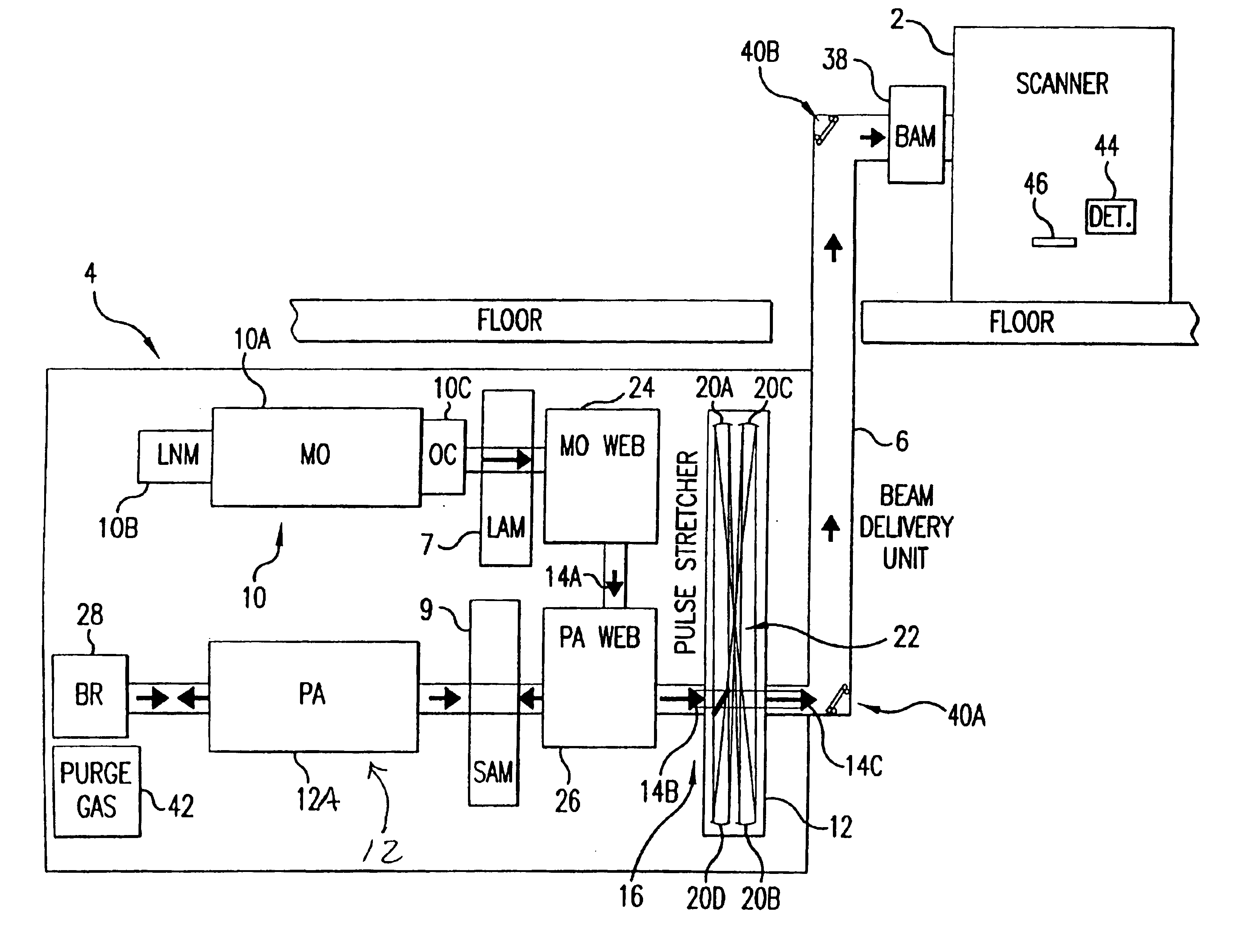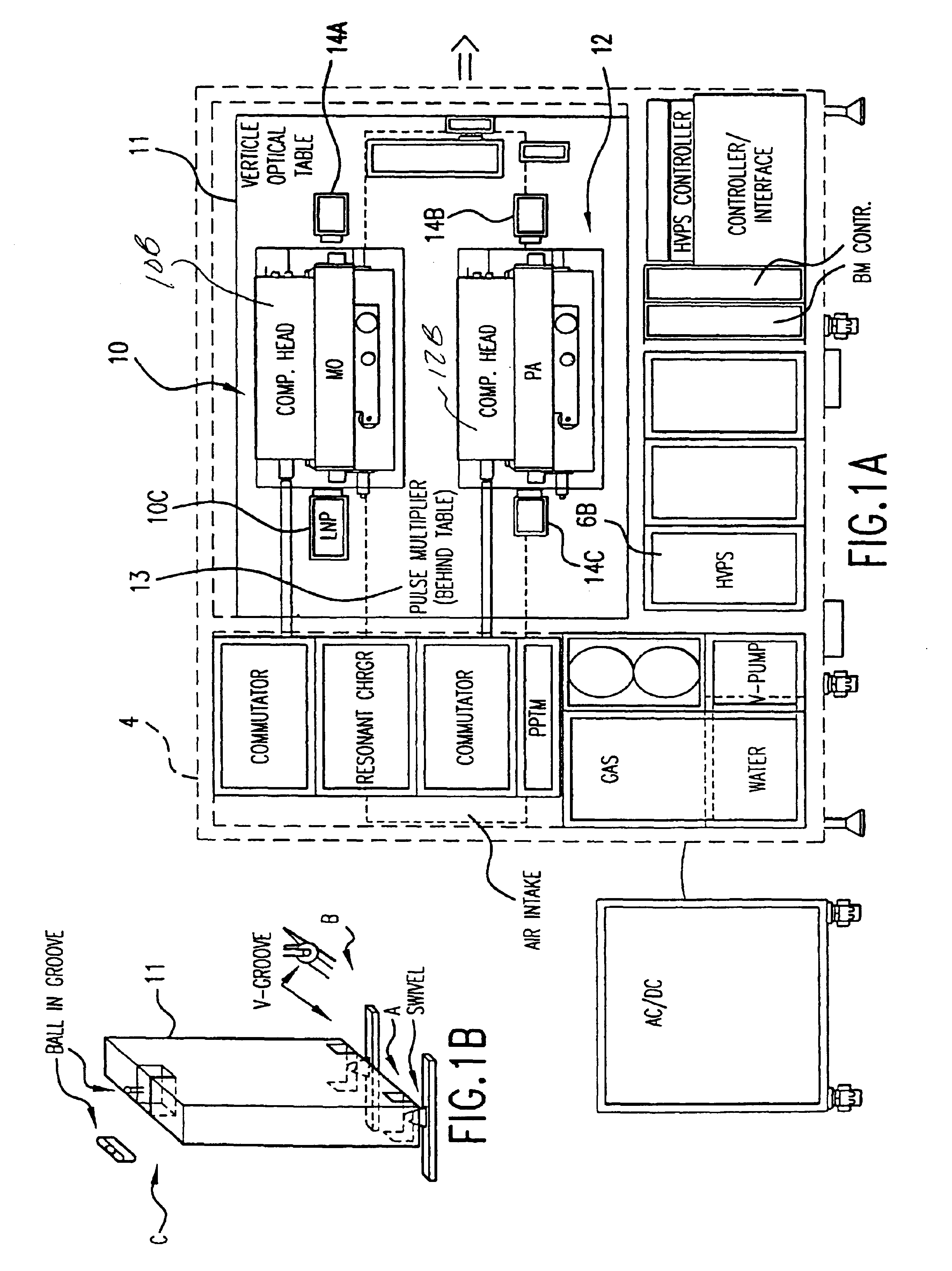Control system for a two chamber gas discharge laser
a control system and gas discharge technology, applied in the direction of instruments, photomechanical equipment, active medium materials, etc., can solve the problems of high cost, large size, and complex construction and operation of laser systems comprised of two separate systems, and achieve the effects of increasing output power, wavelength stability and bandwidth, and pulse energy stability
- Summary
- Abstract
- Description
- Claims
- Application Information
AI Technical Summary
Benefits of technology
Problems solved by technology
Method used
Image
Examples
Embodiment Construction
General Description
[0056]A laser system incorporating a first preferred embodiment of the present invention is shown in FIG. 1. In this embodiment a 193 nm ultraviolet laser beam is provided at the input port of a lithography machine 2 such as stepper or scanner machines supplied by Canon or Nikon with facilities in Japan or ASML with facilities in the Netherlands. This laser system includes a laser energy control system for controlling both pulse energy and accumulated dose energy output of the system at pulse repetition rates of 4,000 Hz or greater. The system provides extremely accurate triggering of the discharges in the two laser chambers relative to each other with both feedback and feed-forward control of the pulse and dose energy.
[0057]In this case the main components of the laser system 4 are installed below the deck on which the scanner is installed. However, this laser system includes a beam delivery unit 6, which provides an enclosed beam path for delivering the laser be...
PUM
 Login to View More
Login to View More Abstract
Description
Claims
Application Information
 Login to View More
Login to View More - R&D
- Intellectual Property
- Life Sciences
- Materials
- Tech Scout
- Unparalleled Data Quality
- Higher Quality Content
- 60% Fewer Hallucinations
Browse by: Latest US Patents, China's latest patents, Technical Efficacy Thesaurus, Application Domain, Technology Topic, Popular Technical Reports.
© 2025 PatSnap. All rights reserved.Legal|Privacy policy|Modern Slavery Act Transparency Statement|Sitemap|About US| Contact US: help@patsnap.com



